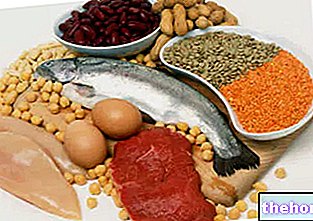ATTENTION! This article is for informational purposes only. The author of the article, limiting himself to reporting what is necessary for the nutritional system in question, refrains from any comment and does not intend to advise or advise against following it.

The aim of the Zone diet is of a healthy nature. Through a series of dietary corrections, it is possible to combat overweight by improving metabolic homeostasis.
The Zone diet does not take into account calories but the quantities of energetic macronutrients. This is based on:
- on the choice of good fats (unsaturated omega 9 and omega 3);
- on the management of the load and the glycemic index of foods and meals, with the aim of avoiding glycemic and insulin peaks.
The intake of fats affects the balance of eicosanoids, ie those biological agents that regulate the inflammatory state and affect various other biological functions. The polyunsaturated omega 3 and monounsaturated omega 9 promote the secretion of the good ones (vasodilators and anti-inflammatory), while the excess arachidonic acid (omega 6) favors the production of the bad ones (vasoconstrictors and proinflammatory).
The attention of the American inventor focuses, in particular, on the management of these hormone-like molecules. The balance between the two guarantees normal blood pressure, a normal blood coagulation process, etc., preventing the risk of dysmetabolism and cardio-circulatory complications from increasing.
Insulin is an anabolic hormone which, if in excess, acts by promoting the synthesis of fats and adipose storage. Stimulated by the intake of energy nutrients, in particular by large quantities of carbohydrates with a high glycemic index, it is mainly used to help transport of blood glucose inside certain tissues - such as muscles. It therefore has a hypoglycemic function.
This function may fail if glucose tolerance and insulin sensitivity are reduced due to various factors - including overweight, sedentary lifestyle and individual predisposition.
When too much insulin is secreted and remains in circulation for a long time, in addition to favoring the increase in fat mass, it negatively affects various indicators of the state of health, such as the general inflammatory state mentioned above.
, 30% fat.
Compared to the Mediterranean diet, carbohydrates are lower and proteins higher, with the aim of moderating insulinemia and controlling the organic production of these eicosanoids.
All this by evaluating not the "daily caloric intake, but the quantity of energetic macronutrients. The calculation system is called" blocks ".
Each block, composed of the aforementioned percentage distribution, allows you to optimally manage the glycemic and insulin response.
However, given its particularity to ban foods rich in carbohydrates with medium and high GI (glycemic index) such as flour derivatives (bread, pizza, pasta, etc.) and potatoes - fundamentals of the Mediterranean diet - very often the diet the area scares anyone who approaches it. This is how the Italian Zone Diet was born.
, but would still be informed and aware of how convenient it is to use such foods in moderation.
This Italian version of the Zone Diet is much more accessible and less drastic, especially for those who have always been used to having breakfast with coffee and croissant or having lunch with a nice plate of pasta followed by the "scarpetta" with bread.
The Italian Zone diet is a solution that could be defined as "intermediate", placing itself halfway between the Mediterranean diet and the original Zone diet.
















.jpg)











